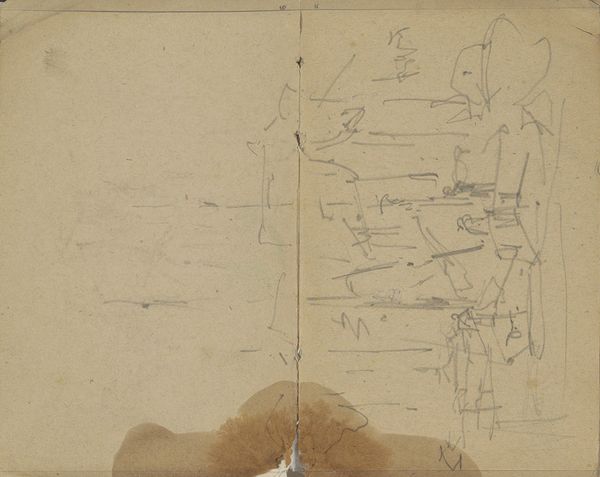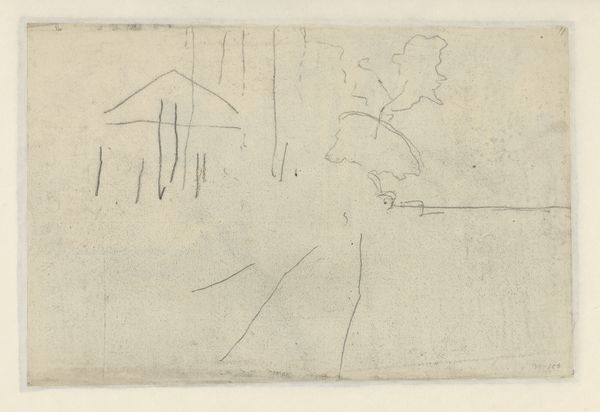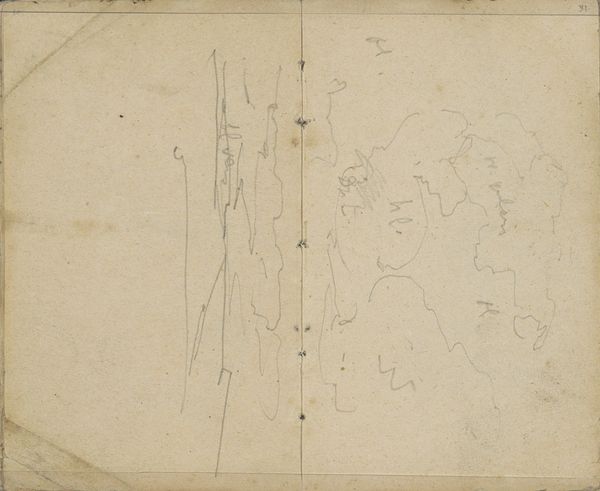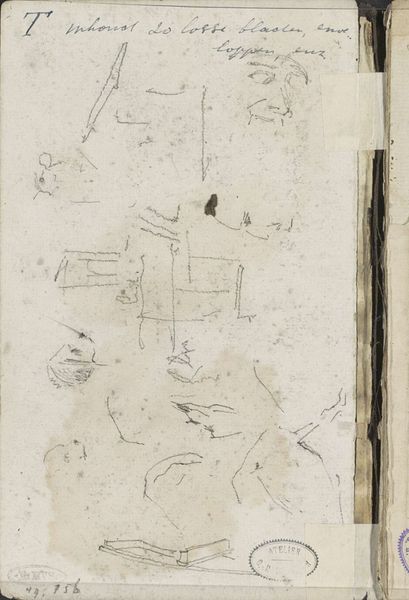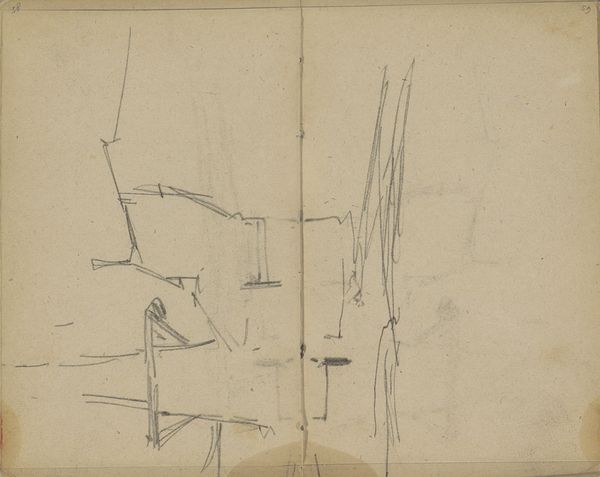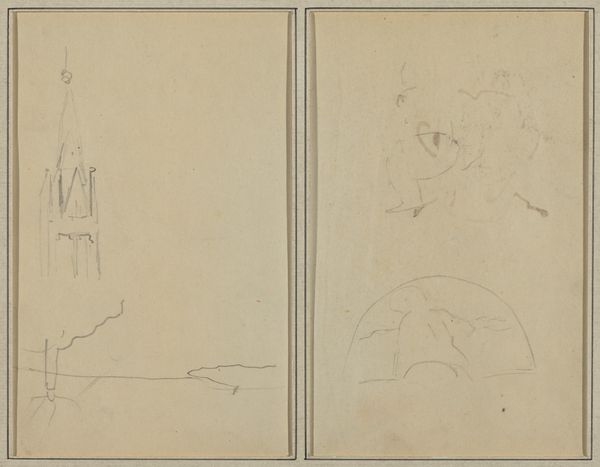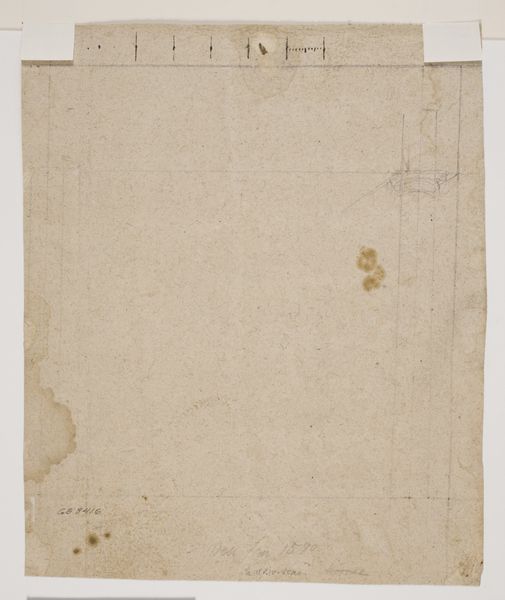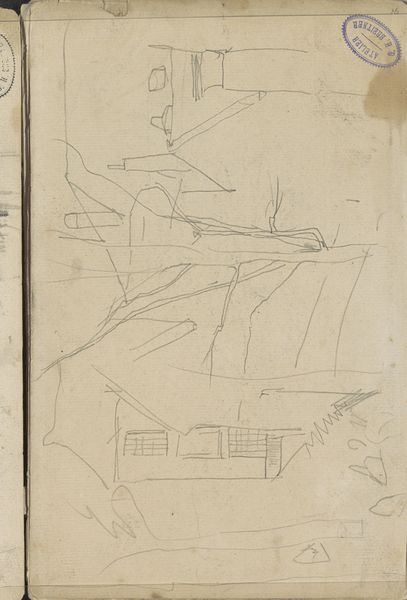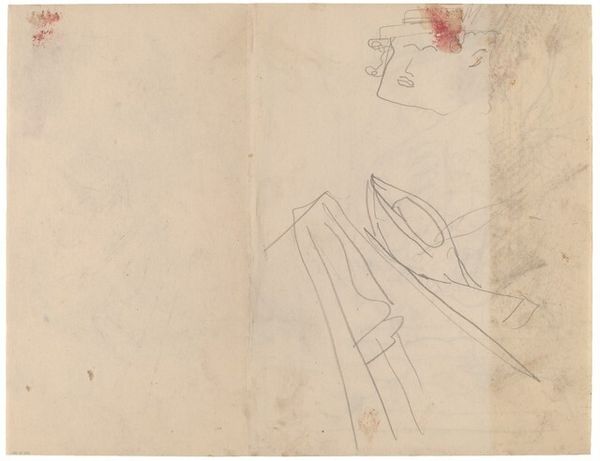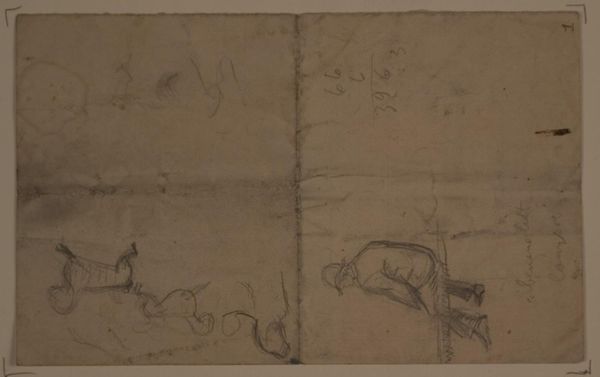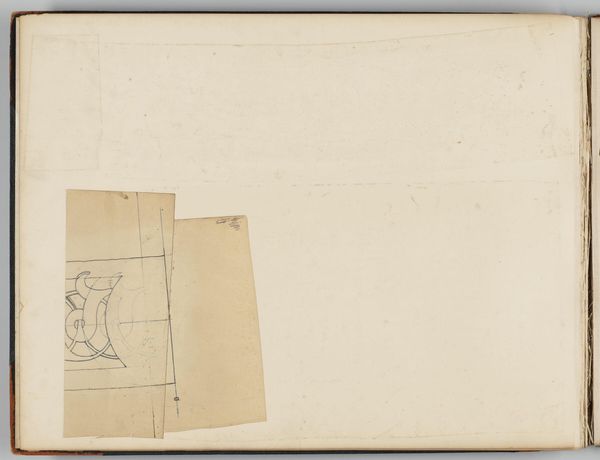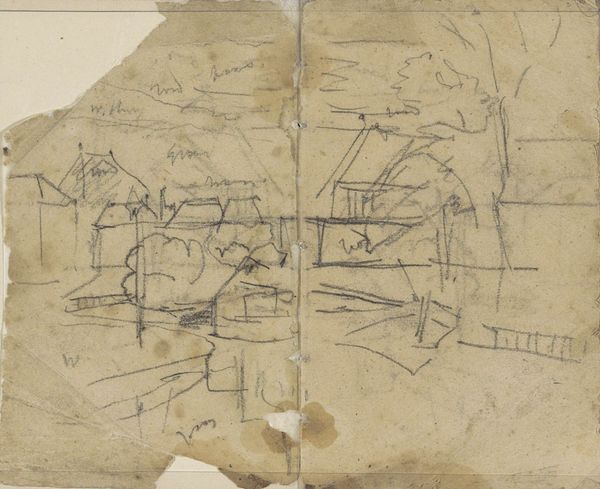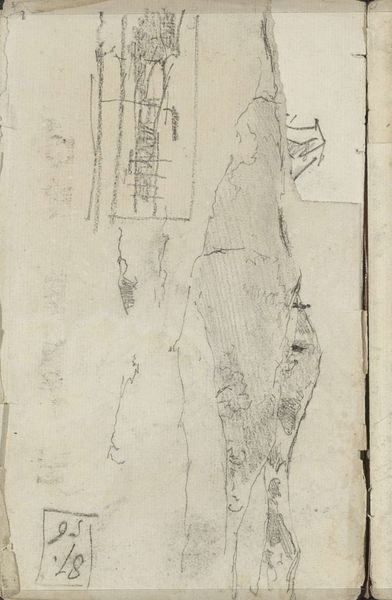
Sketches for an Ecclesiastical Stall (recto and verso) 1830 - 1852
0:00
0:00
drawing, print, paper, pencil, architecture
#
drawing
# print
#
paper
#
form
#
geometric
#
sketch
#
pencil
#
line
#
history-painting
#
northern-renaissance
#
architecture
Dimensions: sheet: 9 11/16 x 15 9/16 in. (24.6 x 39.5 cm)
Copyright: Public Domain
Curator: This drawing is entitled "Sketches for an Ecclesiastical Stall," done between 1830 and 1852 by Augustus Welby Northmore Pugin. It’s a pencil sketch, preparatory work for an architectural feature. What catches your eye first? Editor: The spareness of the lines, definitely. It’s almost skeletal. There's something tentative in its geometric form; I feel I’m looking at a ghost of architecture, an idea being born. Curator: Pugin was deeply invested in Gothic Revival architecture and its link to a specific moral and spiritual order. These sketches reveal that passionate quest. The ecclesiastical stall wasn't just a functional item; it was a symbol of hierarchical order, tradition, and the glory of God. Editor: So the architectural structure, this…stall…is imbued with profound religious symbolism? The arches, for instance—do they echo the heavens? Curator: Exactly. The pointed arch, a hallmark of Gothic architecture, reaches upwards, directing the viewer's gaze, and perhaps their thoughts, toward the divine. Pugin saw Gothic as the one true Christian architecture. Editor: And I see those repeated triangular shapes almost forming the Christian symbol of the trinity, the visual repetition acting like a type of holy motif within this spatial idea, reinforcing it over and over. But I notice that there is nothing 'polished' here, so it is intriguing that a building idea could carry all these notions you've explored even as an early draft, almost a 'thinking in line.' Curator: Pugin viewed the decline of Gothic architecture as parallel to the decline of society. Reviving it, for him, meant restoring societal values. He associated classical architecture with paganism and the Renaissance with a move away from Christian piety. These simple lines therefore embody strong beliefs. Editor: Thinking about these firm lines...it’s a very direct means of conveying fairly complicated feelings. It makes me think that something so linear is almost combative in tone, making a statement in spatiality, not asking a question. The very construction is forceful! Curator: Well said. This simple sketch unveils a layered world of architectural, cultural, and spiritual aspirations. It’s a window into a fervent belief system, rendered with surprising economy. Editor: Agreed. I can see the passion lurking in those thin pencil strokes, defying the architectural order. A fascinating tension.
Comments
No comments
Be the first to comment and join the conversation on the ultimate creative platform.
